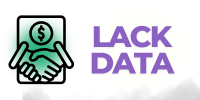In today’s data-driven world, understanding your consumer is paramount for business success. As we move into 2025, the landscape of consumer database providers is more dynamic than ever, offering unparalleled opportunities for targeted marketing, personalized experiences, and strategic growth. But with so many options and evolving technologies, mobile database how do you truly “master” them?
This comprehensive guide will equip you with the knowledge and strategies to effectively leverage consumer database providers in 2025, ensuring your business stays ahead of the curve.
Why Mastering Consumer Database Providers is Crucial in 2025
The modern consumer expects personalized interactions and relevant offerings. In 2025, failing to understand your audience on a deep level means falling behind. Consumer database providers are no longer just about lists of names and addresses; they’re about rich insights into behavior, preferences, and intent. Mastering them allows you to:
- Elevate Personalization: Deliver hyper-targeted marketing campaigns that resonate with individual consumers.
- Optimize Marketing ROI: Focus your resources on the most promising segments, reducing wasted spend.
- Enhance Customer Experience: Anticipate needs and offer solutions before customers even realize they need them.
- Drive Informed Decisions: Make data-backed choices about product development, market entry, and business strategy.
- Gain a Competitive Edge: Outmaneuver competitors by understanding market trends and consumer shifts faster.
Key Features of Top Consumer Database Providers in 2025
As you navigate the options, look for providers that excel in these crucial areas:
- High Data Accuracy and Quality: This is non-negotiable. Look for providers with rigorous verification processes, frequent updates, and transparent data sourcing (first-party, second-party, and third-party data integration).
- Comprehensive Data Sets: Beyond basic demographics, top providers offer psychographic data (lifestyles, values), behavioral data (web activity, content consumption), transactional data (purchase history), and even social media insights.
- Robust Integration Capabilities: Seamlessly connect the database with your existing CRM, marketing automation platforms, business intelligence tools, and other essential systems via APIs and compatible frameworks. Real-time synchronization is a huge plus.
- Advanced Analytics and AI-Powered Insights: Look for platforms that leverage machine learning and AI for predictive analytics, audience segmentation, trend identification, and even automated outreach.
- Compliance with Data Regulations (GDPR, CCPA, etc.): Data privacy is paramount. Ensure the provider adheres to all relevant global and regional privacy laws to protect your business and build customer trust.
- Scalability and Flexibility: The provider should lead magnets that actually work be able to scale with your business needs and offer flexible pricing models (e.g., tiered pricing, customized plans).
- Excellent Customer Support: Responsive and knowledgeable support can be invaluable when integrating and utilizing complex data solutions.
Emerging Trends in Consumer Database Management for 2025
Staying ahead means understanding the future. Here are some key trends shaping consumer database management in 2025:
- Real-time Data Processing and Analytics: The demand for immediate insights is exploding. Expect more emphasis on event-driven architectures and streaming technologies for instant data analysis.
- AI and Automation Dominance: AI will increasingly automate data cleaning, enrichment, segmentation, and even personalized outreach. Low-code/no-code platforms will make data science more accessible.
- Data Fabric and Data Mesh Architectures: As data becomes more distributed across various systems, these architectures will offer unified approaches to orchestrate and manage data, improving accessibility and governance.
- Enhanced Focus on Data Privacy and Trust: With increasing regulations and consumer awareness, transparency and ethical data practices will be at the forefront. Expect more advanced privacy-enhancing technologies.
- Hybrid and Multi-Cloud Strategies: Businesses will continue to combine on-premise and multiple cloud solutions for data storage and processing to handle massive data volumes and ensure resilience.
- Predictive Analytics and Intent Data: Beyond understanding past behavior, the focus will be on predicting future consumer actions and identifying active buying signals.
How to Choose the Best Consumer Database Provider for Your Business
Selecting the right provider is a strategic decision. Follow these steps:
- Define Your Needs and Goals: What specific problems are you trying to solve? Are you focused on lead generation, customer retention, market research, or something else?
- Assess Data Accuracy and Coverage: Request sample datasets and inquire about their data collection methods, update frequency, and verification processes.
- Evaluate Integration Capabilities: Ensure the provider’s solution seamlessly integrates with your existing tech stack to avoid data silos.
- Prioritize Data Privacy and Security: Ask about their compliance certifications (GDPR, CCPA, etc.) and their data security protocols.
- Consider Analytics and Reporting Features: How will you gain actionable insights from the data? Look for intuitive dashboards and customizable reporting.
- Review Pricing and ROI: Compare pricing models and consider the potential return on investment. Some providers offer trial periods – utilize them!
- Check Customer Support and Reputation: Read reviews, bermuda businesses directory ask for references, and assess the quality of their customer support.
- Look for Customization and Scalability: Can the solution be tailored to your unique business needs, and can it grow with you?
Mastering Best Practices for Utilizing Consumer Databases
Once you’ve chosen a provider, mastering its use involves ongoing best practices:
- Continuous Data Hygiene: Regularly clean and de-duplicate your data to ensure accuracy and avoid inefficiencies.
- Strategic Segmentation: Don’t just look at broad categories. Segment your audience into granular groups based on shared characteristics and behaviors for truly personalized outreach.
- A/B Testing and Optimization: Experiment with different campaigns and messaging based on your database insights. Continuously analyze results and optimize your strategies.
- Integrate Across Departments: Ensure your sales, marketing, and customer service teams all have access to and utilize the consumer data for a unified customer view.
- Prioritize Data Security: Implement strong internal protocols for data access and usage to maintain compliance and protect sensitive information.
- Stay Updated on Regulations: The data privacy landscape is constantly evolving. Keep informed about new regulations and adapt your practices accordingly.
- Focus on Actionable Insights: Don’t just collect data; analyze it to find actionable insights that drive business outcomes.
